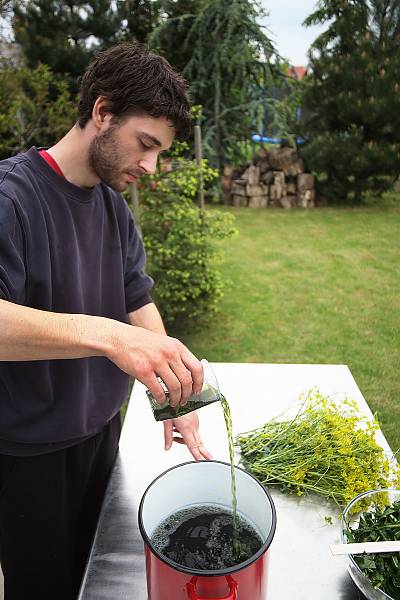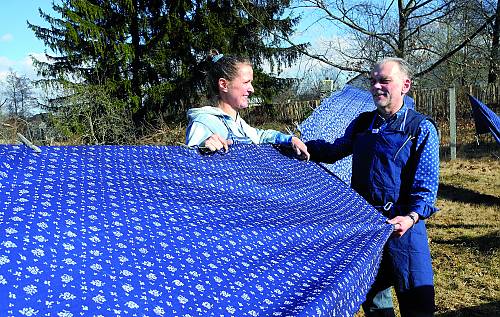Blaudruck/Modrotisk/Kékfestés/Modrotlač, resist block printing and indigo dyeing in Europe
Austria Czechia Germany Hungary Slovakia
Inscribed in 2018 (13.COM) on the Representative List of the Intangible Cultural Heritage of Humanity

Blaudruck/Modrotisk/Kékfestés/Modrotlač, which translates directly as blueprint or blue-dyeing, refers to the practice of printing a dye-resistant paste onto a cloth before dyeing over it with indigo dye. The resistant paste prevents the dye from penetrating the design, thereby ensuring the applied design remains white or undyed after the dyeing process. To apply the designs onto the cloth, practitioners use hand-crafted blocks that are up to 300 years old, featuring regionally-inspired patterns as well as generic designs or Christian motifs. The representation of local flora and fauna is interrelated with the local culture of the regions. Traditional indigo blue-dyeing does not end with printing, however: the textile chain involves preparing the raw materials and spinning, weaving, finishing, printing and dyeing them. Nowadays, businesses engaged in the practice mainly comprise small, family-owned workshops, run by the second to seventh generation of printers. Each family workshop involves the cooperation of the various family members, who each participate in every step of the production regardless of their gender. Traditional knowledge is still based on (mainly family-owned) journals dating back to the nineteenth century and passed on through observation and hands-on practice. Stakeholders feel a strong emotional bond with their products, and the element encapsulates a sense of pride in long-lasting family traditions.









